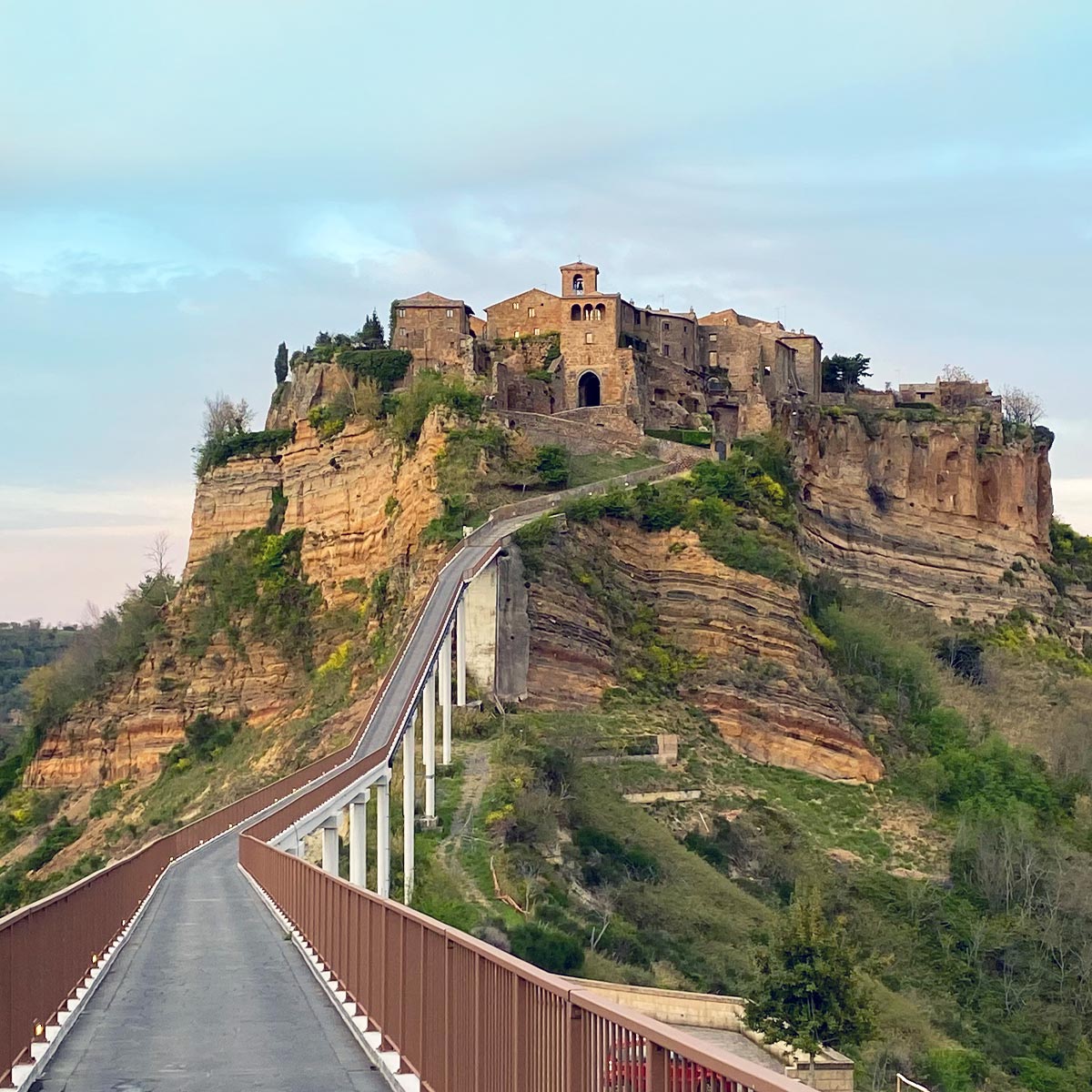Civita di Bagnoregio is located in the valley of the badlands, an area located between Lake Bolsena and the Tiber valley. It consists of two main valleys, the Moat of the Rio Torbido and the Moat of the Rio Chiaro. Originally these places had to be more accessible and were crossed by an ancient road.

The morphology of this area was caused by erosion and landslides. The territory consists of two distinct formations by chronology and type. The oldest is the clayey one, of marine origin and constitutes the base layer, particularly subject to erosion. The upper layers are instead formed by tuffaceous and lava material.
The rapid erosion is due to the work of streams, atmospheric agents, and also to logging. Inhabited by only 11 people and located in an isolated position, Civita di Bagnoregio can only be reached by a reinforced concrete pedestrian bridge built in 1965. The bridge can only be crossed only by foot.

Historical background
Civita was found 2500 years ago by the Etruscans. It stands on one of the oldest roads in Italy, joining the Tiber and Lake Bolsena.
The ancient town of Civita was accessed through five gates, while today the door known as “Santa Maria” or “Della Cava” represents the main one. It is also possible to access Civita from the valley of the badlands through a tunnel carved into the rock. The urban structure of the entire town is of Etruscan origin, consisting of cardi and decumani according to the Etruscan and then Roman use, while the entire architectural covering is Middle-Ages and Renaissance.
Also the cave of San Bonaventura, in which it is said that San Francesco healed the little Giovanni Fidanza, who later became San Bonaventura, is actually an Etruscan chamber tomb. The Etruscans made Civita a blooming city, favored by its strategic position for trade, thanks to its proximity to the most important communication routes of the time.
Many testimonies of the Etruscan period remain: of particular suggestion is the so-called “Bucaione”, a deep tunnel that cuts through the lower part of the town, and which allows access, directly from the town, to the Valle dei Calanchi. In the past, many chamber tombs were also visible, dug at the base of the cliff of Civita and the other neighboring tuff walls which, over the centuries, were largely affected by the countless landslides.
Moreover, the Etruscans themselves had to face the problems of sismology and instability of the area, which in 280 BC. resulted in earthquakes and landslides. Upon the arrival of the Romans, in 265 BC, the impressive works of channeling rainwater and containing streams started by the Etruscans began again.

